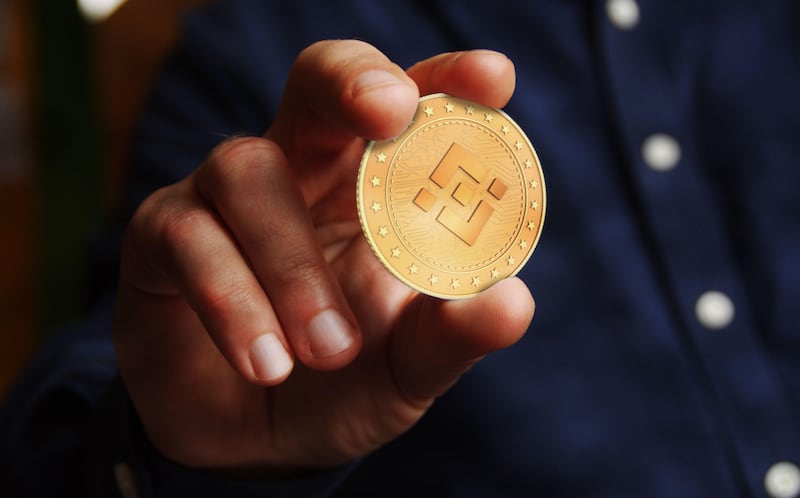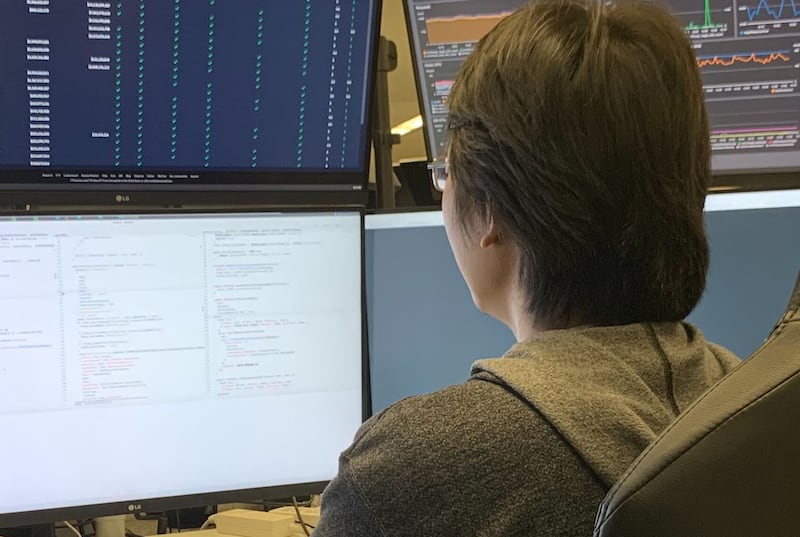RELATED: A beginner's guide to building a cryptocurrency portfolio
The continuing volatility in the broader cryptocurrency market after a blockbuster 2021 has given many investors and dabblers time to reflect.
This may be a good time to look beyond the oft-repeated features of the cryptocurrency story so far — sharp momentum, institutional attention, spectacular gains, rapid tech innovation, celebrity shoutouts, social media promotion and the low-stakes, high-gains meme coins play.
Drowned out by all the noise is an aspect of cryptocurrency ownership that deserves more attention: crypto staking. For all the buzzy headlines around cryptocurrencies, staking has remained a relatively unexplored area of the digital assets domain.
So, what’s the deal with staking? Put simply, it’s a way to generate passive income while waiting for cryptocurrency assets to increase in value. Investors can now actively earn high returns, or interest yield, by lending out their cryptocurrency holdings, a process called staking.
If you’re thinking about investing in cryptocurrencies, you may want to look at making additional gains through staking.
Here is a guide to help you navigate staking cryptocurrencies to get the biggest bang for your buck.
What is cryptocurrency staking?
Fundamentally, staked coins are akin to interest-bearing savings accounts or bonds as they all provide interest income on your initial investment.
As part of staking, the cryptocurrency holder locks up, or commits, their holdings in exchange for rewards or interest, paid in the form of additional coins. It’s a way to make more crypto with your crypto.
Apart from staking, you can also earn interest and fees by lending out your cryptocurrency through a process known as yield farming. This does not require long lock-up periods. With yield farming, investors can provide their cryptocurrency for loans or liquidity and they can deposit or withdraw assets from yield farms whenever they choose.
Cryptocurrency staking and yield farming are fast-growing areas of the larger decentralised finance (DeFi) system. With both, you get the benefit of keeping your cryptocurrency and also earning income from it.
To stake, investors need to own a cryptocurrency that uses the proof-of-stake (PoS) model. Ethereum 2.0, Solana, Cardano and Avalanche are the top-five stakeable assets by total staked value, according to the Staking rewards website.
You can buy these assets at a reputed cryptocurrency trading platform such as Binance, Coinbase and Crypto.com, among others.
Once you hold these assets, you can choose the amount you want to stake on a PoS-based blockchain.
By depositing cryptocurrency into staking, a holder becomes a validator whose role it is to approve valid transactions on the blockchain. In exchange for this service to the network, the staker receives additional tokens as a reward for their efforts.
Look before you leap
Many users might simply compare the highest yields being offered by various staking pools, but there are other important factors to consider. So says David Malka, the founder of YieldFarming.com, which teaches investors how to earn income from their cryptocurrency.
“Many coins require a minimum lock-up period that restricts you from withdrawing assets during a set time period and there may be different waiting periods for withdrawing assets on different blockchains,” he says.
A lock-in period — which could range from weeks to months — takes staked crypto assets out of circulation. At the end of the staking duration, you earn yield in addition to regaining access to your cryptocurrency holdings.
World's 10 richest crypto billionaires - in pictures
Beware, however, as you can’t perform any transactions with your staked assets and if you decide to unstake before the completion of the lock-in period, you will forfeit any interest you generated, which will be deducted from your principal.
There’s also the minimum investment amount to consider. While some projects, such as Cardano (ADA) and Cosmos (ATOM), have no or low threshold for staking, others like Ethereum require a minimum of 32 ETH coins, which could be a prohibitively large investment for some given the high price of Ether, the native coin of the Ethereum blockchain.
How do you stake cryptocurrencies?
First, you need to buy and store the relevant tokens in your digital wallet. For example, if you want to stake for Cardano, you will need to have Cardano’s ADA token in your wallet.
Many popular cryptocurrency exchanges offer users the ability to stake crypto directly on their platform. There are also dedicated staking platforms such as Everstake, Blockdaemon and others. These allow you to easily compare a variety of staking opportunities and stake assets by connecting your cryptocurrency wallet.
The process of getting started in yield farming is similar but is done by using decentralised exchanges such as Uniswap and PancakeSwap or decentralised applications like Aave or Curve Finance.
Staking could be an attractive way for investors to put their assets to work rather than stashing them away in a cryptocurrency wallet, the digital equivalent of stuffing money under the mattress.
What happened to the Bitcoin price, is it the end of the crypto boom?

Going solo or pool?
While the biggest rewards come from becoming a full validator, it also requires a sizeable minimum investment. For some investors, therefore, going solo may not be a more practical option. A simpler and cheaper way to dip your toe into staking could be staking pools.
A staking pool is where coin holders can form a group by combining their resources, known as pooling. By consolidating their assets, they can improve their chances of validating blocks and earn rewards in return.
However, relative to solo staking, a staking pool offers a smaller yield because each validation reward is divided among the participants who staked their assets.
It’s important to note that the staking pool option is only available on blockchains that adopt the proof-of-stake (PoS) consensus mechanism.
A staking pool is typically run by a pool operator or a staking service. To join the pool, participants must lock their coins in a specific blockchain address, or wallet.
What are the risks?
Like any cryptocurrency investment, staking does come with risks. For starters, staking doesn’t insulate investors from price volatility of the underlying asset. The extreme and frequent price swings can be particularly painful for new investors who aren’t in it for the long haul.
During the lock-in period, asset value can depreciate quickly, sometimes by a sizeable amount, and you may not be able to unstake or sell your holdings. In such a situation, investors could potentially suffer a loss larger than any gains made from staking.
“In general, I usually recommend staking as a long-term investment strategy for investors who plan on holding a specific asset, regardless of market fluctuations,” says Mr Malka.
Staking also requires you to lock up your holdings for a certain amount of time. During that period, you're unable to do anything with your staked assets, so there is opportunity cost to consider.
There are other risks related to potential hacks or exploits. Any technical weaknesses or vulnerabilities in the protocol design could potentially result in cyber theft and the loss of funds.
While this risk is low, it does exist. It’s important to acknowledge that this technology is still in its infancy and there are kinks to iron out.

What’s in store for staking in 2022?
Up until 2021, only a few digital coins used staking as a method of validation. However, as a growing number of leading layer-one blockchains, such as Ethereum and Cardano, roll out the staking feature, “staking and yield farming are becoming popular ways to make a profit in crypto without trading coins”, says Mr Malka.
According to the website Staking Rewards, the total amount of cryptocurrencies staked as of April 2022 was $280 billion.
“This number is going to continue to grow significantly because there is a tonne of interest from both retail crypto holders and traditional financial institutions in getting involved in DeFi,” Mr Malka adds.
Bottom line
If you’re planning to hold your cryptocurrency assets longer term, putting them to work by staking is an attractive option to generate passive interest income.
Keep in mind, though, cryptocurrencies are inherently risky assets prone to extreme volatility. All cryptocurrency investments, including staking, must be made strategically and within your individual risk capacity.
“It’s important to do your own research to identify the best opportunities to reach your goals,” Mr Malka says.
And remember the cardinal cryptocurrency rule: never invest anything you can’t afford to lose.
Disclaimer: The author does not own any of the cryptocurrencies mentioned in the article nor does he have any affiliation with the exchanges or applications listed herein.
























